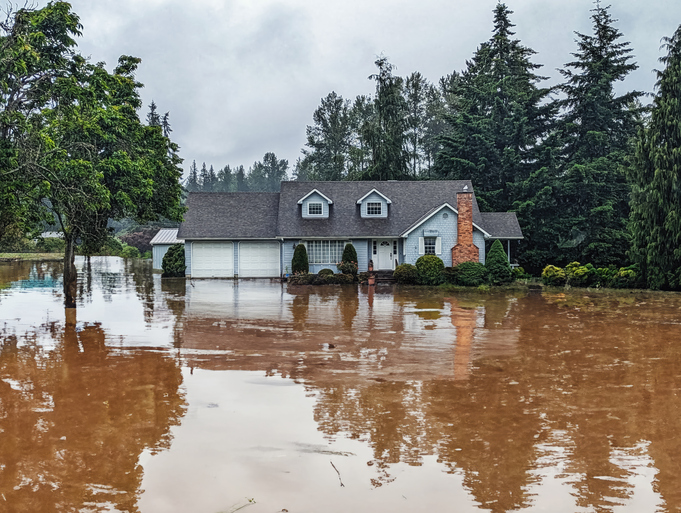
Access to affordable homeowner’s insurance is becoming a pressing issue in many markets. In high-risk areas prone to floods, wildfires or hurricanes, insurance companies are increasingly denying coverage or imposing skyrocketing premiums, making it difficult for buyers to secure the policies required by mortgage lenders at a reasonable price — or at all. Even in less risk-prone areas, trends are showing up with insurers requiring additional inspections, certifications and/or replacements of certain systems to qualify for coverage.
The current hot issue in Pennsylvania and across the country is roof certification or replacement — sometimes because a house was exposed to severe weather, and sometimes just based on the age of the roof. Some insurance companies are refusing to issue a policy until an older roof is replaced (often 15 years or older, even if it’s still under warranty), which is just too costly for homebuyers. Brokers and buyers are searching for a way to protect themselves against these requirements and costs, but PAR has a form for that — and you’re probably already using it.
Home/Property Inspection Contingency
Need an inspection of the roof and related systems? Your client is already covered (get it?) if they elect the home/property inspection contingency, which starts out by saying, “Buyer may conduct an inspection of the property’s structural components; roof; … exterior building material, fascia, gutters and downspouts…” Remember that it is up to the buyer to actually elect the inspection and then conduct as many inspections as they want under the contingency, so long as they are completed within the timeframe. If a roofing report is unsatisfactory to the buyer, they could potentially terminate or attempt to negotiate a written corrective proposal under the contingency.
Property and Flood Insurance Contingency
Another buyer protection is the property and flood insurance contingency, which has been in PAR’s Agreement of Sale since 2010. If the buyer elects the contingency, it allows them to “determine the insurability of the property by making application for property and casualty insurance for the property to a responsible insurer.” The “report” for this contingency is likely a policy proposal and/or list of repairs necessary to obtain insurance. If that report is unsatisfactory — coverage is not available, the cost is prohibitive or the necessary repairs are unaffordable — that could permit the buyer to terminate or negotiate a written corrective proposal with the seller.
Mortgage Contingency
If elected, the mortgage contingency also has two provisions that function as implied insurance contingencies. Paragraph 8(F)(5) of the 2024 Agreement of Sale provides a process to address situations where “the mortgage lender(s), or a property and casualty insurer providing insurance required by the mortgage lender(s), requires repairs to the property.”
This provision does not allow the buyer to unilaterally terminate based on the required repairs. Instead, they must submit the repair list to the seller, who then has a choice of whether or not to perform them. If the seller does the repairs required by the insurer, then the transaction moves forward. If the seller doesn’t agree to do the repairs, the buyer has the choice to do them or to terminate the Agreement.
More generally, in some situations where the policy and/or repair costs are high, buyers may find that the added expense means they are no longer financially qualified for the loan. The mortgage contingency says that if a buyer is unable to obtain financing on the terms stated in the Agreement after making good faith efforts (and that this failure is not based on some default by the buyer), they will be entitled to a return of their deposit if the transaction cannot move forward based on the lack of financing. It takes a few steps to get there, but this ultimately provides another level of buyer protection.
Be Prepared
Perhaps the most important role of a Realtor® is to be a trusted advisor to your clients. And one of the best ways to do that is to look ahead at potential problems, then use the resources at your disposal to help protect against them. And of course, one of PAR’s most important roles is to actually provide those resources where we can. Whether working with buyers or sellers, be sure to take another look at these existing contingencies to understand how they might work in your transactions, and then talk with your clients about how they might be used in specific transactions.
Topics
Member Discussion
Recent Articles
-
Weeding Through the Rules on Medical Marijuana
- March 28, 2025
- 5 min. read
Regulated use of medical marijuana has been available in Pennsylvania since 2018, and questions about its use have been brought to the Legal Hotline from the start.
-
Flood Insurance Enrollment Down 2.5% in Pa.
- March 27, 2025
- 3 min. read
Although flooding is the most common and expensive natural disaster, 96.3% of U.S. households don’t have flood insurance, and flood insurance enrollment in Pennsylvania fell 2.5% last year.
-
4 Steps to Inspecting Your Attic Insulation
- March 26, 2025
- 3 min. read
“Generally, conventional insulation should be changed after 15-20 years,” says Havelock Wool CEO Andrew Legge.
Daily Emails
You’ll be the first to know about real estate trends and various legal happenings. Stay up-to-date by subscribing to JustListed.



